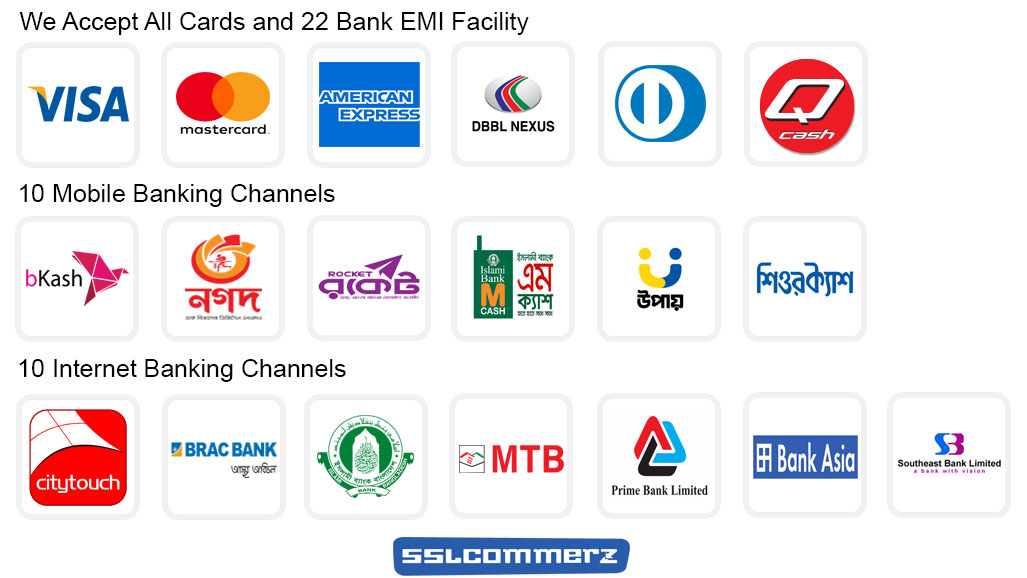Linux Essentials (Ubuntu)
Course Objective
This course will introduce and teach the basic concepts and components of the Linux operating system. This customized Linux Essentials training is a great first step for those looking to make a career in Linux systems administration, DevOps Engineer, Security Professional, Software Developer, Server Administrator, Cloud engineer or for those that want to expand their IT knowledge. By the end of this course, you will gain knowledge on several Linux distributions.
Target Audience
This course is Designed for :
- System administrators
- DevOps Engineer
- Software Developers
- Server Administrator
- Cloud Engineer
- Security Engineer
Course Pre-Requites
We recommend that attendees of this course have:
- Operating System Concepts
- Networking fundamental
- TCP/IP Protocol concepts
- Computer Hardware concepts
- System troubleshooting skill
Course Summary
Course Fee
৳ 6,000
Training Method
Online
Total Modules
18
Course Duration
36 Hours
Total Session
18
Class Duration
2 Hours

Details Course Outlines
Module-01
LINUX Introduction
- Operating System Concepts
- Parts of Operating System
- How Operating System works
- Kernel, Shell & Applications
- Linux and GNU Project
- Part of Linux Based Operating Systems
- Linux vs Windows Operating Systems
- Why Use Linux Operating systems
Module-02
Familiar with Linux Distributions
- Identification of various Linux distributors
- How to identify proper distribution
- Different types of Linux OS Version
- Difference between Server and Desktop OS
- Features of Red Hat Distribution
- Features of Ubuntu Distribution
- Download Ubuntu Linux Distribution
Module-03
Preparing Linux Installations and Lab Setup
- Planning a Linux Installation
- Required hardware resources for Linux install
- Partitioning Requirements for Linux install
- Linux Installation Method (USB/ISO/DVD/PXE)
- Required Partitions for RHEL/Ubuntu Installation
- Standard Installation vs LVM Installation
- Physical lab and Virtual Lab Setup Requirements
Module-04
Create VMs for Ubuntu Linux OS
- Introducing Physical, Virtual, Cloud Environment
- Required System Configuration for Virtual Lab
- Introduction Virtualization Technology
- Introduction to VMware Workstation/Hyper-V
- Download and Install VMware Workstation
- Create VM on VMware Workstation for Ubuntu Linux
Module-05
Install and Configure Ubuntu Linux
- Installation of Ubuntu Linux on VMware Workstation
- Details discussion about OS booting options
- Details discussion about Installation Summary
- Linux Installation Method (MBR and GPT)
- Configure Post installation on Ubuntu Linux
- Deploy Ubuntu Linux on Amazon AWS Cloud
Module-06
Linux Desktop Environment
- Introducing Ubuntu Desktop Environment
- Different Types of Login Method
- Introducing Ubuntu OS Control Panel (Settings)
- Configure & Manage Ubuntu Desktop
- Introducing Linux Console
- Introducing Linux Command Terminal
- Access AWS Cloud VM (Instance)
Module-07
Getting started with Linux CLI
- Working with terminal and command console
- Introduction to Linux shells and terminal
- Linux Virtual Console/Terminal
- Logging remote system through SSH
- Linux Command Syntax, Options, Argument
- Examples of Simple Commands
- Powering Off, Reboot and Logout System
Module-08
Working with Linux Files & Directories
- Linux File System Hierarchy
- Introducing Linux Directory Structure
- Navigating Linux Directory Paths
- Introducing Different Types Linux Files
- In depth of Linux Directories
- Files & Directory handling commands
Module-09
Linux Text Processing Tools
- Different types of text processing tools
- Redirecting Output to a File
- Constructing and Using Pipelines
- Working with tail, head, cat, less, wc, echo
- Working with Regular Expressions 'grep'
- Familiar with Linux 'find' Command
Module-10
Linux Text Editors
- Why need text editor
- Different types of text editors
- Linux Text Editor Utilities (vim, gedit, nano)
- Introduction to 'vi/vim' and 'nano'
- Working with Different 'vi/vim' Modes
- Editing, Replacing, Searching with 'vi/vim'
- Working with ‘vim’ advanced features
Module-11
Linux User and Group Administration
- Users and Groups Introduction
- Linux User Types and User Database
- Manage password requirements
- Primary Groups and Supplementary Groups
- Managing Local User Accounts
- Managing Local Group Accounts
Module-12
Linux File Permissions and Ownership
- Introducing Linux File Permissions
- Working with Linux File & Directory Properties
- Linux User, Group and Other Permission Concept
- Viewing File/Directory Permission and Ownership
- Default File Permission and Umask Value
- Change file permission and Ownership.
- Working with ACL Permission
Module-13
Linux Boot, Process and Services
- Step by step Linux booting procedures
- Working with GRUB2 Boot loader
- Update Linux Kernel (Ubuntu)
- Controlling Linux daemon & Services
- Enabling/Disabling System Daemons at boot
- Linux process management introduction
- Details explain of "TOP" command
Module-14
Network Management (IPv4)
- Understand Network Device Recognition
- Working with NetworkManager Services
- Introducing Network Manager tools
- Configuring Host Name and Name Resolution
- Working with gateway and route table
- Configure Static and dynamic IP
- Configuring IPv4 Network (Ubuntu)
Module-15
Ubuntu Package Management using APT
- The Linux Package Management system
- Core Concepts for Package Management
- How to Use APT Package Manager in Ubuntu
- Update & Upgrade Ubuntu Packages
- Concept of Repositories, CDN, Mirror
- Add/Remove a Repository Using APT
Module-16
Configuring OpenSSH Service
- What is the Secure Shell (SSH)?
- How SSH (Secure Shell) works?
- Install and Configure OpenSSH (Ubuntu)
- Customizing SSH Service Configuration
- Restricting SSH Logins
- Using Putty and OpenSSH Clients
Module-17
Web Server with PHP & MySQL (Project Work)
- Introduction to Web Server
- DNS configuration for Web Server
- Install and configure apache HTTPD
- Introducing Apache (httpd) Configuration files
- Configure HTML Based Hosting (Ubuntu)
- Install LAMP stack (Linux, Apache, PHP & MySQL)
- Configure Name-based Virtual Hosting
Module-18
Linux System Troubleshooting
- Reset Linux OS ‘root’ password.
- Examine the different types of log files
- Troubleshooting Boot Loader issue
- Troubleshoot Network Related issues.
- Troubleshooting Login related issues
- Monitoring and fix system resources
